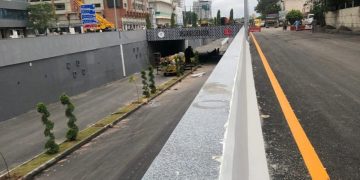In the age of digital disruption and the challenging landscape of Pakistan, literacy is crucial for the future advancement of this developing country. As the common Pakistani faces socio-economic issues, the education system stands as both a pillar of potential and a glaring need for reform. As International Literacy Day on September 8th approaches, it is essential that we focus on this crucial issue.
The Literacy Landscape: A Critical Overview
Pakistan, with over 240 million individuals, faces deteriorating literacy level by each passing day. As of 2023, the records of Pakistan Bureau of Statistics stated that the literacy rate still at 60% of population. Moreover, there is a notable difference in literacy rates between urban and rural communities, with rural areas lagging behind their urban counterparts. Furthermore, disparity on basis of gender is creating more intense situation, where female literacy rates trailing significantly behind male literacy rates.
The educational system in Pakistan has several challenges, such as obsolete curricula, insufficient facilities, and a dearth of competent and well-trained professors. The federal government’s annual education budget is projected to be around 2.5% of GDP, which is insufficient to address the challenges faced by the education system. Many institutions are struggling to provide even the most basic learning resources, and schools in remote areas often lack essential facilities, raising serious concerns about the quality of education.
How can we improve literacy rate in Pakistan?
A few ideas on how educationists and policymakers might approach Pakistan’s literacy crisis by thinking creatively and independently and coming up with unconventional solutions are as follows:
- Mass Infrastructure Improvement: Since 60% of Pakistan’s population still lives in rural areas, it is essential to invest in building and renovating schools in these areas. The rate of literacy will not alter in the absence of proper facilities and resources and a favorable learning environment.
- Contemporary Curriculum: Updating curricula to make them more relevant and engaging can help bridge the gap between current educational practices and the needs of today’s students. Incorporating technology and interactive learning methods can make education more accessible and effective.
- Teacher Training and Recruitment: Investing in a teacher training program today will pay off in the future by improving student outcomes. First, expand teacher training programs footmark, add new innovative teaching practices, secondly offers incentives for teaching in underserved areas can help attract and retain skilled educators.
- Community Engagement: Involving the community can be a game-changer for any educational effort by fostering a new culture of learning and support for the schools. Community-based programs which bring local stakeholders, can boost efforts and ensure that children remain in school.
- Government and NGO Collaboration: New agreements and Mou’s are required as per local need, collaboration between government bodies, NGOs, and international organizations like Rotary can play major role in this wave of change. They bring resources and expertise with better planning and strategies.
On this 8th September, as we observe International Literacy Day in Pakistan, it is imperative for Pakistan’s future to realize the significant role literacy can play. Along with a determined push for institutional transformation, organizations focused on education, such as Rotary International or others, should be more collaboratively involved in order to make a significant impact over the coming years.
About Author
Muhammad Rizwan Adhia is a prominent businessman and philanthropist, serving as Co-Chairman of Country Builders & Developers and Founder of Riz Electric (www.rizelectric.com). He is also the District Governor for Rotary International, demonstrating his commitment to both business and community service.





























